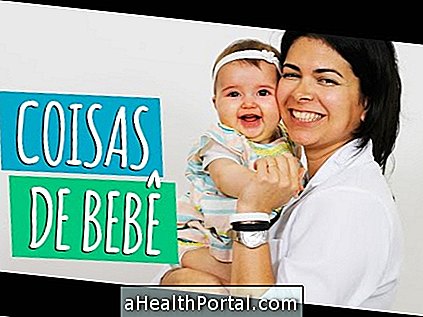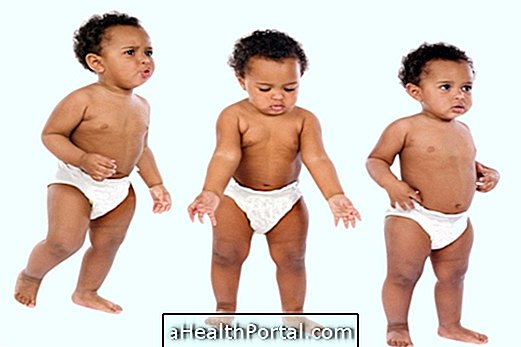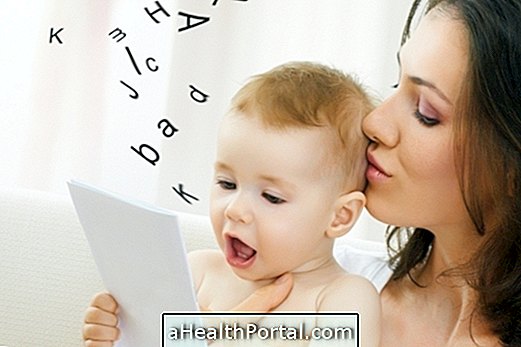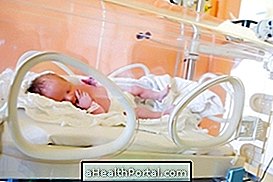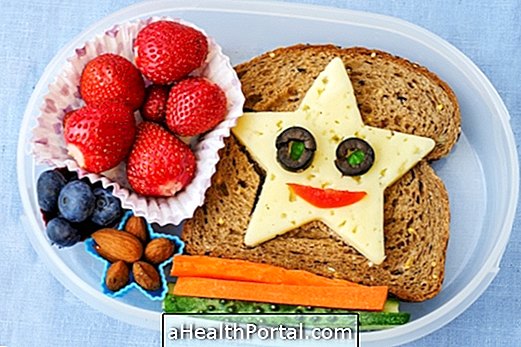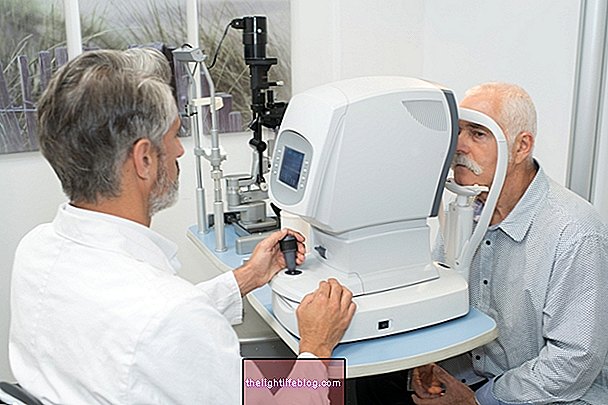The baby at 2 months is already more active than the newborn, but he still interacts little and sleeps more than 15 hours a day. Some may be slightly agitated, tense, light sleepers who do not breastfeed with pleasure, while others may be quiet and calm, sleeping and eating well.
At this age the baby likes to play for a few minutes, being able to smile in response to stimuli, gargle and move the body.
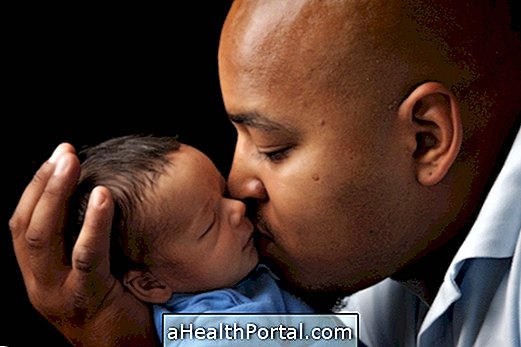
Baby weight at 2 months
This table indicates the ideal baby weight for this age, however, the weight may vary slightly, and the baby may have more or less weight.
| Boys | Girls | |
| Weight | 5.0 g | 4.8 g |
| Stature | 57 cm | 55 cm |
| Cephalic perimeter | 39 cm | 38 cm |
| Thoracic perimeter | 37 cm | 36 cm |
| Monthly weight gain | 750 g | 750 g |
On average, babies at this stage of development maintains a standard of weight gain of 750 g per month. However, it may happen that the weight is well above the values indicated here, and in this case it is possible that the baby is overweight and it is recommended to consult the pediatrician.
Baby sleep at 2 months
The 2-month-old baby's sleep is still not very regular, but it is common at 2 months 50% of babies who take artificial milk to sleep through the night, unlike breastfeeding babies who wake up every 3 or 4 hours during night to nurse.
For the baby to get good sleep habits, there are some key tips that include:
- Put the baby in the crib while sleepy but awake;
- Do not let the baby sleep more than three consecutive hours during the day;
- Make the feeds in the middle of the night brief;
- Do not wake the baby to change diapers at night;
- Do not let the baby sleep in your bed;
- Give the last feeding at bedtime, around 10 or 11 a.m. at night;
- Always keep the same routine before bed.
Development of baby at 2 months
The development of the baby at 2 months should be evaluated by the pediatrician, but at this age the baby is common:
- Keep the head, neck and upper chest, leaning on the forearms for a few seconds;
- Hold your head when you are in someone's arms;
- When someone talks or cares for him, respond with a smile and show satisfaction by moving his legs and arms.
- Make some sounds and gesture.
Your crying varies according to your needs like hunger, sleep, frustration, pain or need for contact and affection.
Up to 2 months, the baby has blurred vision, colors and contrasts are not well defined, but brightly colored objects attract your attention.
Watch the video to learn what the baby is doing at this stage and how you can help him develop faster:

Babies for the baby at 2 months
Playtime for the baby at 2 months can be helpful in stimulating and increasing the bond with the baby and at this age parents can:
- Hang objects, colorful figures, mobiles in the cradle or where he stays during the day, so that the baby can follow his movements;
- Make baby's room clear with colorful pictures and mirrors;
- Look directly into your eyes, 30 cm from your face, smile, grimace or imitate your facial expression;
- Sing to cheer or entertain the baby;
- Speak a lot and repeat the sounds he makes;
- Lay the baby on his back, crossing his arms over his chest and then stretching them out, up and down;
- Massage the baby's skin after bathing with a relaxing music;
- Shake a rattle next to the baby, await his look and thank him in a soft, high-pitched voice.
At 2 months, the baby can start daily walks, preferably in the morning, around 8am, or in the late afternoon, starting at 5pm. Learn more about development at this stage in Baby Development with 2 months.
Baby feeding at 2 months
The feeding of the baby at 2 months should be exclusively breast milk, and it is recommended to keep breastfeeding until 6 months of age if possible, because breast milk acts as a vaccine, protecting the baby from various infections. When the baby breastfeeds it is not necessary to give water to the baby because it provides all the hydration it needs.
If the mother has difficulty in breastfeeding, it is recommended that she supplement her own milk-for-age feeding, as indicated by the pediatrician. This supplementation may be especially important during the summer in order to avoid dehydration.
If the baby takes a bottle, it is normal that he is more likely to have cramps, but these can also occur in babies who are exclusively breastfed. In this case, parents can learn techniques to combat baby cramps, learn more in 5 tips to relieve baby gas.
